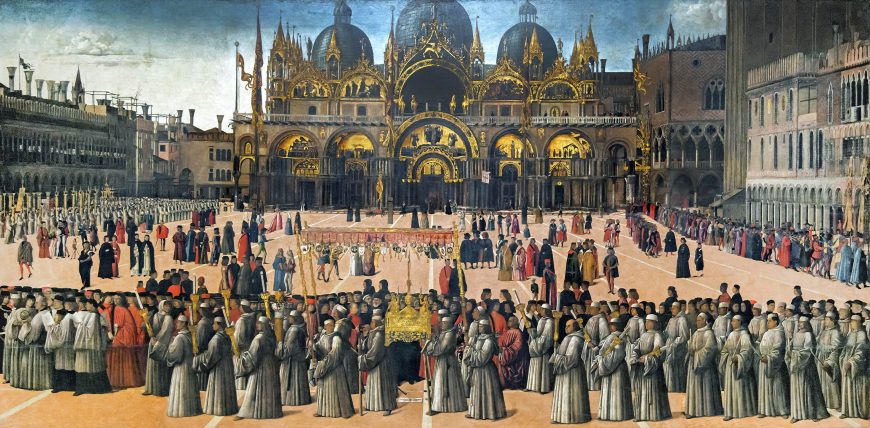On Our Way to Italy–Venice
On Our Way to Italy–Venice

A procession in St. Mark’s Square, Venice (1496)—more information is provided through the link at the very end of this post.
We are headed to Italy this June and July, 16 of us so far—alumni and friends of FPU. (You can find out more about the tour on the FPU Alumni web page.)
There are many benefits to travel, beyond sheer enjoyment, and being able to go with friends (and soon to be friends). Part of the fun of it is the anticipation and thinking about what we will see, try and do. As I have turned to the more detailed preparation, I have begun to look at things that the group or individuals might want to consider. We have planned group events, tours, etc. and have allotted ample free time and days to explore as we may choose. Here are some things I’m thinking about, and others might want to consider too. Our first stop is Venice!
Italy Guides has a good overview of sites in Venice. If you dig into them individually, you will find multiple things. The Doge’s palace is a must! Venice was one of the great medieval and early modern republics. Some brief, history can be found on YouTube and on other sites. (Here is a good history site. There are lots of inadequate and misleading sites, so check on who writes them and what they are for.) If you do a YouTube search on “Venice” there are lots of other things to look at, some longer, some shorter. There are travel shows and videos, like Rick Steve’s series, some of which can be found on YouTube.
There are a couple of special topics that might be of interest as well. Venice was one of the great Jewish centers in the early modern world, and perhaps the first Ghetto. Jews from central Europe and elsewhere traded there, and Sephardic Jews expelled from Spain and Portugal in 1492 at the end of the reconquest found refuge in the larger Venetian Jewish community. In 2016, the 500th anniversary of the founding of the Jewish ghetto was commemorated, one of the events being the first performance in Venice of Shakespeare’s Merchant of Venice with Supreme Court Justice Ruth Bader Ginsburg as the judge in the play’s trial scene.
And we cannot leave out some of the art that we will see. The art of each city and building has a story. Some of the art we will see was developed by the “confraternities” of the medieval and early modern world. These were what might be called religious brotherhoods, composed of both clerics and laypeople, usually with a dual dedication to prayer and other devotional practices and to practical forms of charity, mutual assistance or charity. They were patrons of art like the piece that leads this post. You can find some interesting things about them at smarthistory a non-profit educational site that works with museums worldwide.
And this is just our first city!




